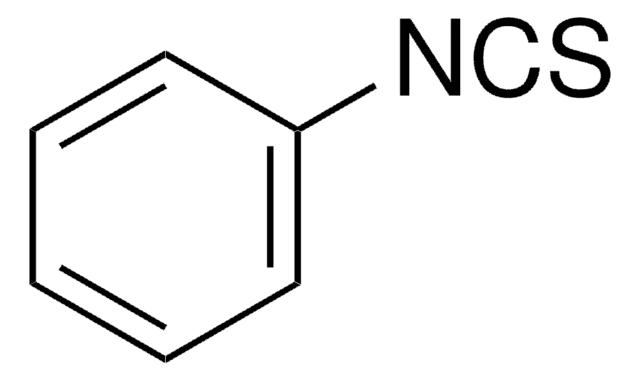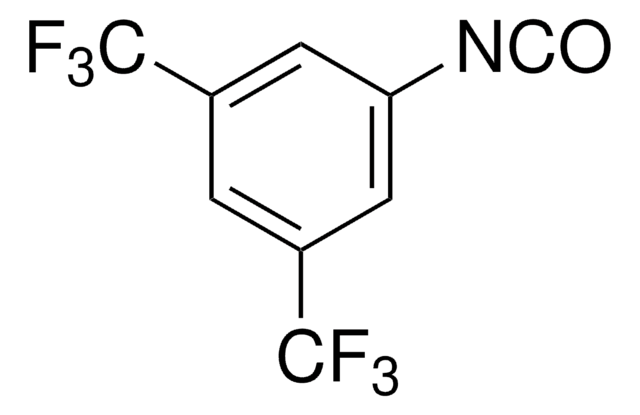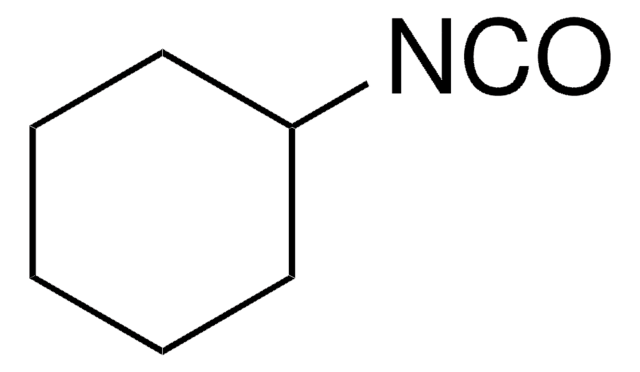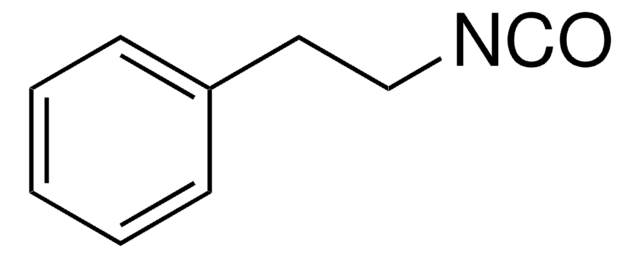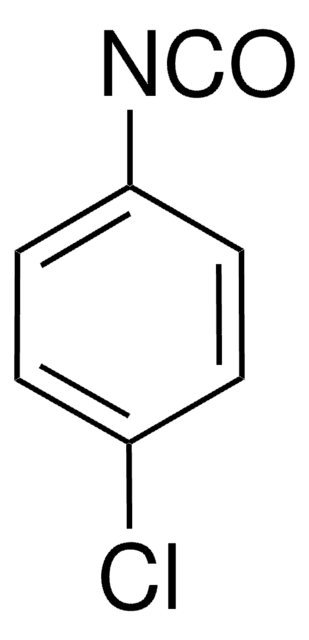185353
Phenyl isocyanate
≥98%
Synonym(s):
Isocyanatobenzene, PhNCO
About This Item
Recommended Products
vapor pressure
1.4 mmHg ( 20 °C)
Quality Level
Assay
≥98%
form
liquid
refractive index
n20/D 1.535 (lit.)
bp
162-163 °C (lit.)
mp
−30 °C (lit.)
density
1.096 g/mL at 25 °C (lit.)
functional group
isocyanate
storage temp.
2-8°C
SMILES string
O=C=Nc1ccccc1
InChI
1S/C7H5NO/c9-6-8-7-4-2-1-3-5-7/h1-5H
InChI key
DGTNSSLYPYDJGL-UHFFFAOYSA-N
Looking for similar products? Visit Product Comparison Guide
Related Categories
General description
Application
Signal Word
Danger
Hazard Statements
Precautionary Statements
Hazard Classifications
Acute Tox. 1 Inhalation - Acute Tox. 4 Oral - Aquatic Acute 1 - Aquatic Chronic 1 - Eye Dam. 1 - Flam. Liq. 3 - Resp. Sens. 1 - Skin Corr. 1C - Skin Sens. 1A - STOT SE 3
Target Organs
Respiratory system
Storage Class Code
3 - Flammable liquids
WGK
WGK 2
Flash Point(F)
123.8 °F - closed cup
Flash Point(C)
51 °C - closed cup
Personal Protective Equipment
Regulatory Listings
Regulatory Listings are mainly provided for chemical products. Only limited information can be provided here for non-chemical products. No entry means none of the components are listed. It is the user’s obligation to ensure the safe and legal use of the product.
FSL
Group 4: Flammable liquids
Type 2 petroleums
Hazardous rank III
Water insoluble liquid
ISHL Indicated Name
Substances Subject to be Indicated Names
ISHL Notified Names
Substances Subject to be Notified Names
JAN Code
185353-500G:4548173347707
185353-VAR:
185353-BULK:
185353-5G:4548173347691
185353-100G:4548173347714
Choose from one of the most recent versions:
Already Own This Product?
Find documentation for the products that you have recently purchased in the Document Library.
Customers Also Viewed
Protocols
HPLC Analysis of Isocyanates on Titan™ C18
Global Trade Item Number
| SKU | GTIN |
|---|---|
| 185353-500G | 4061838757050 |
| 185353-100G | 4061838757043 |
| 185353-5G | 4061838757067 |
Our team of scientists has experience in all areas of research including Life Science, Material Science, Chemical Synthesis, Chromatography, Analytical and many others.
Contact Technical Service

